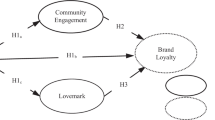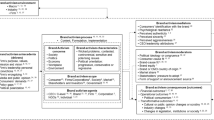Abstract
This article focuses on the study of the main factors attracting visitors, not only new ones, to wineries, and also on how to keep these customers loyal. This research fills a gap in wine tourism literature, taking into account the differences between brand image and destination image as antecedents of brand equity in wine tourism destinations. The empirical analysis has been carried out with two Spanish denominations of origin, Rioja and Navarra, selected by Nielsen’s market share. Particularly, this study draws from a survey of 232 visitors who visited the wineries during the autumn of 2010. The development of a model of wine tourism destination brand equity provides empirical support in order to evaluate the influence of destination image and brand image on brand equity. Before testing the hypotheses, the measuring instrument was evaluated by means of partial least squares regression. A multi-group analysis was carried out to determine the main differences between these two denominations of origin. The paper hereby recommends the creation of alliances among wine companies and tourism industry (hotels, restaurants, active tourism companies, spa resorts, and so on) to succeed in their own businesses. Finally, limitations are outlined to encourage further research.
Similar content being viewed by others
References
Aaker D.A.: Managing Brand Equity. Free Press, New York (1991)
Aaker D.A.: Measuring brand equity across products and markets. Calif. Manag. Rev. 38(3), 102–120 (1996)
Alant K., Bruwer J.: Winery visitation sets. Intra-regional spatial movements of wine tourists in branded regions. Int. J. Wine Bus. Res. 22(2), 191–210 (2010)
Ali-Knight J., Charters S.: Education in the West Australian wine tourism context. Int. J. Wine Mark. 11(1), 7–18 (1999)
Bagozzi R., Yi Y.: On the evaluation of structural equation models. J. Acad. Mark. Sci. 16(1), 74–94 (1988)
Baloglu S., McCleary K.W.: A model of destination image formation. Ann. Tour. Res. 26(4), 868–897 (1999a)
Baloglu S., McCleary K.W.: US international pleasure travelers’ images of four Mediterranean destinations: a comparison of visitors and nonvisitors. J. Travel Res. 38(2), 144–152 (1999b)
Beerli A., Martín J.D.: Tourists’ characteristics and the perceived image of tourist destinations: a quantitative analysis—a case study of Lanzarote. Spain. Tour. Manag. 25(5), 623–636 (2004)
Bollen K.A.: Structural Equations with Latent Variables. Wiley, New York (1989)
Bollen K.A., Lennox R.: Conventional wisdom on measurement: a structural equation perspective. Psychol. Bull. 110(2), 305–314 (1991)
Boo S., Busser J., Baloglu S.: A model of customer-based brand equity and its application to multiple destinations. Tour. Manag. 30(2), 219–231 (2009)
Brown G., Getz D.: Linking wine preferences to the choice of wine tourism destinations. J. Travel Res. 43(3), 266–276 (2005)
Brown G., Havitz M.E., Getz D.: Relationship between wine involvement and wine-related travel. J. Travel Tour. Mark. 21(1), 31–46 (2006)
Brunori G., Rossi A.: Synergy and coherence through collective action: some insights from wine routes in Tuscany. Sociologia Ruralis 40(4), 409–423 (2000)
Bruwer J.: South African wine routes: some perspectives on the wine tourism industry’s structural dimensions and wine tourism product. Tour. Manag. 24(4), 423–435 (2003)
Bruwer J., Alant K.: The hedonic nature of wine tourism consumption: an experiential view. Int. J. Wine Bus. Res. 21(3), 235–257 (2009)
Carlsen J.: The first Australian wine tourism conference. Tour. Manag. 20(4), 367–368 (1999)
Carlsen, J., Ali-Knight, J.: Managing wine tourism through demarketing: the case of Napa Valley, California. In: Carlsen, J., Charters, S. (eds.) International Wine Tourism Research, Proceedings of the International Wine Tourism Conference. Margaret River, Western Australia, Vineyard Publications, Perth, Australia (2004)
Charters S., Ali-Knight J.: Wine tourism—a thirst for knowledge?. Int. J. Wine Mark. 12(3), 70–80 (2000)
Charters S., Ali-Knight J.: Who is the wine tourist?. Tour. Manag. 23(3), 311–319 (2002)
Charters S., O’Neill M.: Service quality at the cellar door: a comparison between regions. Int. J. Wine Mark. 13(3), 7–17 (2001)
Chin W.W.: Issues and opinion on structural equation modelling. MIS Q. 22(1), 7–16 (1998)
Cohen J.: Statistical Power Analysis for the Behavioral Sciences. Lawrence Erlbaum Associates, Hillsdale (1988)
Cohen E., Ben-Nun L.: The important dimensions of wine tourism experience from potential visitors’ perception. Tour. Hosp. Res. 9(1), 20–31 (2009)
Cronbach L.J.: Coefficient alpha and internal structure of test. Psychometrika 16(3), 297–334 (1951)
Diamantopoulos A., Winklhofer H.M.: Index construction with formative indicators: an alternative to scale development. J. Mark. Res. 38(2), 269–277 (2001)
Dodd T.H.: Attracting repeat customers to wineries. Int. J. Wine Mark. 11(2), 18–28 (1999)
Echtner C.M., Ritchie J.R.B.: The meaning and measurement of destination image. J. Tour. Stud. 14(1), 37–48 (2003)
Falk R.F., Miller N.B.: A Primer for Soft Modeling. University of Akron Press, Akron (1992)
Fornell C., Larcker D.F.: Evaluating structural equation models with unobservable variables and measurement error. J. Mark. Res. 18(1), 39–50 (1981)
Geisser S.: A predictive approach to the random effect model. Biometrika 61(1), 101–107 (1974)
Getz D.: Explore Wine Tourism. Management Development and Destinations. Cognizant Communication, New York (2000)
Getz D., Brown G.: Critical success factors for wine tourism regions: a demand analysis. Tour. Manag. 27(1), 146–158 (2006)
Getz D., Dowling R., Carlsen J., Anderson D.: Critical success factors for wine tourism. Int. J. Wine Mark. 11(3), 20–43 (1999)
Gómez, M., Molina, A.: Wine tourism in Spain: denomination of origin effects on brand equity. Int. J. Tour. Res. (2011). doi:10.1002/jtr.868
Hall C.M.: Biosecurity and wine tourism. Tour. Manag. 26(6), 931–938 (2005)
Hall C.M., Macionis N.: Wine tourism in Australia and New Zealand. In: Butler, R.W., Hall, C.M., Jenkins, J.M. (eds) Tourism and Recreation in Rural Areas, pp. 197–224. Wiley, Chichester (1998)
Hall C.M., Mitchell R.: The tourist terroir of New Zealand wine: the importance of region in the wine tourism experience. In: Montanari, A. (ed.) Food and Environment: Geographies of Taste, pp. 69–91. Societa Geografica Italiana, Rome (2002)
Henseler J., Ringle C.M., Sinkovics R.R.: The use of partial least squares path modeling in international marketing. Adv. Int. Mark. 20, 277–319 (2009)
Jarvis C.B., MacKenzie S.B., Podsakoff P.M.: A critical review of construct indicators and measurement model misspecification in marketing and consumer research. J. Consum. Res. 30(2), 199–218 (2003)
Johnson R., Bruwer J.: Regional brand image and perceived wine quality: the consumer perspective. Int. J. Wine Bus. Res. 19(4), 276–297 (2007)
Keller K.L.: Conceptualizing, measuring, and managing consumer-based brand equity. J. Mark. 57(1), 1–22 (1993)
Keller K.L.: Strategic Brand Management: Building, Measuring, and Managing Brand Equity. Prentice Hall, Upper Saddle River (2003)
Konecnik M., Gartner W.C.: Customer-based brand equity for a destination. Ann. Tour. Res. 34(2), 400–421 (2007)
Lockshin L., Spawton T.: Using involvement and brand equity to develop a wine tourism strategy. Int. J. Wine Mark. 13(1), 72–81 (2001)
Macionis N., Cambourne B.: Wine and food tourism in the Australian Capital Territory: exploring the links. Int. J. Wine Mark. 10(3), 5–22 (1998)
MacKenzie S.B., Podsakoff P.M., Jarvis C.B.: The problem of measurement model misspecification in behavioural and organizational research and some recommended solutions. J. Appl. Psychol. 90(4), 710–730 (2005)
Martin G.S., Brown T.J.: In search of brand equity: the conceptualization and measurement of the brand impression construct. In: Childers, M.L. (eds) Marketing Theory and Applications, pp. 431–438. American Marketing Association, Chicago (1990)
Martínez E., de Chernatony L.: The effect of brand extension strategies upon brand image. J. Consum. Mark. 21(1), 39–50 (2004)
Martínez E., Montaner T., Pina J.M.: Propuesta de medición de la imagen de marca: un análisis aplicado a las extensiones de marca. Revista Asturiana de Economía 33, 89–112 (2005)
Martínez E., Pina J.M.: Modeling the brand extensions’ influence on brand image. J. Bus. Res. 62(1), 50–60 (2009)
Mitchell R., Hall C.M.: The post-visit consumer behavior of New Zealand winery visitors. J. Wine Res. 15(1), 39–49 (2004)
Mitchell R., Hall C.M.: Wine tourism research: the state of play. Tour. Rev. Int. 9(4), 307–332 (2006)
Nielsen, : Anuario Nielsen 2009. Nielsen Company, Madrid (2010)
Nunnally J.C., Bernstein I.H.: Pychometric Theory. McGraw Hill, New York (1994)
Petter S., Straub D., Rai A.: Specifying formative constructs in information systems research. MIS Q. 31(4), 623–656 (2007)
Poitras L., Getz D.: Sustainable wine tourism: the host community perspective. J. Sustain. Tour. 14(5), 425–448 (2006)
Reinartz W., Haenlein M., Henseler J.: An empirical comparison of the efficacy of covariance-based and variance-based SEM. Int. J. Res. Mark. 26(4), 332–344 (2009)
Ringle, C.M., Wende, S., Will, A.: SmartPLS 2.0 (M3) Beta. University of Hamburg, Hamburg. http://www.smartpls.de (2005)
Ruiz A., Olarte C., Huarte M., Muñoz R., Calderón M.E., Izquierdo A., San Martín S.: Las denominaciones de origen vitivinícolas españolas. Distribución y Consumo 76, 45–51 (2004)
Sánchez M.J., Martín F.A., Rondán F.J.: Estética y calidad de relación. Una aplicación en los servicios de música online entre jóvenes europeos. Revista Española de Investigación de Mark. ESIC 14(1), 25–56 (2010)
Scherrer P., Alonso A., Sheridan L.: Expanding the destination image: wine tourism in the Canary Islands. Int. J. Tour. Res. 11(5), 451–463 (2009)
Stone M.: Cross-validatory choice and assessment of statistical predictions. J. R. Stat. Soc. Ser. B (Met.) 32(2), 111–147 (1974)
Tasci A., Kozak M.: Destination brands vs destination images: do we know what we mean?. J. Vacat. Mark. 12(4), 299–317 (2006)
Tenenhaus M., Esposito V., Chatelin Y.M., Lauro C.: PLS path modelling. Comput. Stat. Data Anal. 48(1), 159–205 (2005)
Werts C.E., Linn R.L., Jöreskog K.G.: Intraclass reliability estimates: testing structural assumptions. Educ. Psychol. Meas. 34(1), 25–33 (1974)
Yoo B., Donthu N., Lee S.: An examination of selected marketing mix elements and brand equity. J. Acad. Mark. Sci. 28(2), 195–211 (2000)
Yoo B., Donthu N.: Developing and validating a multidimensional consumer-based brand equity scale. J. Bus. Res. 52(1), 1–14 (2001)
Author information
Authors and Affiliations
Corresponding author
Rights and permissions
About this article
Cite this article
Gómez, M., Molina, A. & Esteban, Á. What are the main factors attracting visitors to wineries? A PLS multi-group comparison. Qual Quant 47, 2637–2657 (2013). https://doi.org/10.1007/s11135-012-9676-5
Published:
Issue Date:
DOI: https://doi.org/10.1007/s11135-012-9676-5




